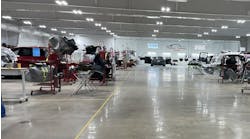Many small business owners still don't understand that the primary purpose of any business is to make money. This requires making a profit, which seems to be considered a bad word by some. Without profit no business can focus on the future and look to create innovations or customer value. They are simply stuck in a day-to-day struggle of keeping the doors open. This struggle usually leads to making bad business decisions for a short-term gain, which compromises the long-term sustainability of the business.
Most business owners don't know the difference between good profits and bad profits. Before I was educated on the differences, profit was profit. On a profit and loss statement you won't see a designation of what was which, and if you talk with a CFO, CPA, or the sales staff they will not know the difference.Simply put you know you have customers that are delighted with your services. These customers talk your business up, and even bring in their friends – these customers represent good profits. On the other hand you have customers who are not happy with what you provided and they talk your company down, which represents your bad profits. They also are called distracters, according to Fred Reichheld, author of "The Ultimate Question ... Driving Good Profits and True Growth."
Fifteen years ago, a happy customer would tell four or five people about your company and an unhappy customer would tell 10 to 15 people. Today with the Internet, these distracters may tell 10,000 or more. With this social network power, it's critically important you know the difference between your good profits and bad profits. Your good profits lead to new sustainable growth, whereas your bad profits restrict your growth and hinder or poison the sustainability of your business.
There are several key businesses that have figured this out and they are typically the market leaders in their business segment. But how did they figure it out? In most of our pay incentives, we do not focus on generating good profits – we create incentives on gross profits, turned hours, reduced costs – not whether the customer is going to be a promoter or a distracter.
Yes, we do at times tie in staff members to something in CSI, but is the Customer Satisfaction Survey asking the right question? Most of the Customer Satisfaction Surveys ask a lot of questions that are operational in nature – did we treat you right, get your vehicle back when promised, communicated well with you, give your car back clean, and did the quality meet your expectations? At times we also ask about the rental car company and even the insurance company. The last question sums everything up and is most important – would you recommend us? This most important question is a very simple breakdown to what the ultimate question really is all about.
Many of the key business market leaders believe in what is called the net promoter score. This is simply the percentage of customers delighted subtracted by the percentage of customer distracters. This is the key to good profits and sustainable growth.
We often have three major industry segments involved during a claim on a customer's vehicle. Each segment can provide their part in a manner that creates delighted customers or distracters. Regardless of advertising dollars spent, distracters will eventually cause reduced growth or poison business sustainability for those shops that do not meet and exceed their expectations.
Businesses that understand this can increase their market share and become dominant. But again, only for a short time gain if they do not ensure real good profits rather than an opportunistic increase of bad profits. It's your decision to provide good profits. How you determine the difference will take a commitment on your part – but there is help in several sources. Just look for it and you will find it.
Contact info: [email protected]




